Swartzentruber Amish: The “Hardest-Core” Subgroup (Here’s Why)
The most conservative Amish group
 Swartzentruber Amish are a subgroup within Old Order Amish society. Swartzentruber Amish use more limited technology, dress more plainly, and typically have a lower standard of living than more progressive Amish.
Swartzentruber Amish are a subgroup within Old Order Amish society. Swartzentruber Amish use more limited technology, dress more plainly, and typically have a lower standard of living than more progressive Amish.
Swartzentruber Amish are arguably the most traditional significant Amish subgroup. They’re apt to see themselves as holding to tradition more steadfastly than other Amish. The Swartzentruber faction originated out of conflict over the issue of social shunning (more on that below).
Like other Amish, the Swartzentrubers have also flourished in the 21st century. Today they can be found in many states across the country. Several aspects of Swartzentruber life make them stand out when compared with other Amish:
Swartzentruber Amish characteristics:
- Technology allowed – Swartzentruber Amish are much more restrictive in technologies used
- Style of dress – Swartzentruber clothing tends to be heavier and plainer, especially in the case of women
- Use of motor vehicles – riding in cars is prohibited, except in emergencies
- Length of church service – Swartzentruber services tend to be longer, even up to four hours
- Social distance from non-Amish – Swartzentruber Amish are less likely to have close relationships with non-Amish people
- Education -Swartzentruber schooling is more basic than the typical level of Amish education
Origins of the Swartzentruber group
The Swartzentruber division happened over the years 1913-1917 in the Holmes County community in Ohio. Similar to the original Amish split from the Mennonites in 1693, the issue that precipitated the conflict concerned shunning. A conservative faction felt that Amish who were excommunicated and subsequently joined another church, not in fellowship with the original one, should continue to be shunned.
A majority of Amish in the community felt that a more lenient approach should be taken, with the Bann removed by the original church if the individual were accepted by a new church. Despite some concessions on issues of dress made to the conservative side in hopes of alleviating conflict, the groups split in 1917, with the conservative faction under the leadership of bishop Sam Yoder. The division meant that families and neighbors were split from one another, and in some cases could not longer interact formally in church services or marry one another.
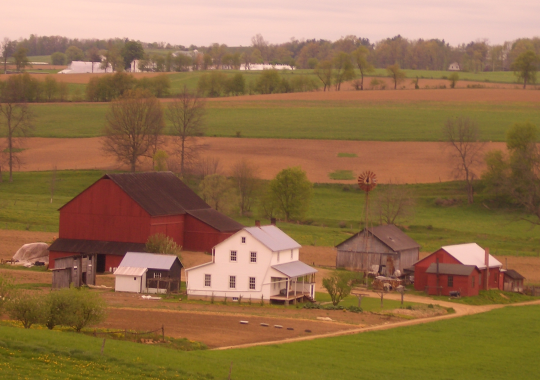
A number of other conflicts resulted in later years, with the Sam Yoder group maintaining a conservative Ordnung. After Yoder’s death, the two conservative districts were both led by bishops with the last name Swartzentruber, leading to the entire group taking the Swartzentruber name (see An Amish Paradox, Charles Hurst and David McConnell, and New York Amish, Karen Johnson-Weiner, for more on Swartzentruber origins). Today the Swartzentruber Amish are found in locations well beyond Ohio (see below).
Restrictions on technology
Swartzentruber Amish emphasize tradition and resist change more than the majority of Amish groups. As a result, they are among the most restrictive when it comes to use of technology. Swartzentruber Amish do not permit automobile travel except in emergencies.
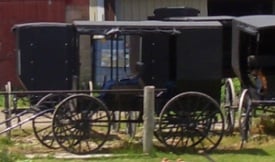
Swartzentrubers do not have in-home plumbing or hot water. Outhouses are used, and bathing occurs less regularly. Swartzentruber homes typically have a rough appearance, with peeling paint, dirt driveways, and lacking flowerbeds and manicured lawns common to higher-order Amish.
Perhaps the easiest way to tell a Swartzentruber church member is by their carriages. Swartzentruber buggies do not carry the SMV triangle, reflecting Swartzentruber beliefs against wordly symbols and emphasis on reliance on God. Swartzentruber buggies also use limited reflective tape and lamp lighting, in contrast to the often very highly illuminated Old Order Amish buggies. Some higher-order Amish criticize the Swartzentrubers for their resistance to adopting safety symbols. Swartzentruber buggies also lack windshields, mirrors, or electric lighting.
Swartzentruber restrictions on technology also affect the ways they can make a living and the level of income they can earn. Swartzentruber businesses are limited to the technology they can use. Builders are forbidden from using cars, which limits their range.
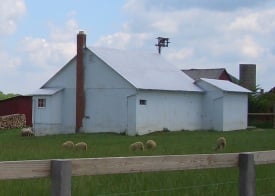
Swartzentruber shops do not use pneumatic or hydraulic power, and are limited to line shafts powered by a diesel engine. Businesses are generally less marketing-oriented and less likely to advertise. While advertisting for other Amish may consist of high quality color catalogs and newspaper ads, for the Swartzentrubers advertising is tyipcally simple hand-stenciled signs at the end of a lane or a hand-written business card.
Swartzentruber farmers typically do not use cooling tanks, and provide milk in metal containers. This restricts their milk to grade “B” quality, making it suitable for cheese-making but not as drinking milk, and subsequently fetching a lower price.
Where do Swartzentruber Amish live?
The Swartzentruber Amish live in over a dozen states today, as well as Ontario. The highest population is found in the Holmes/Wayne county community in Ohio. Other significant Swartzentruber populations are found at Lodi/Homerville in Ashland and Medina Counties in Ohio, as well as at Ethridge, Tennessee (both communities founded over 40 years ago, and numbering over 10 or more church districts). Swartzentruber settlements can also be found in states such as New York, Minnesota, Mississippi, North Carolina, and Maine.
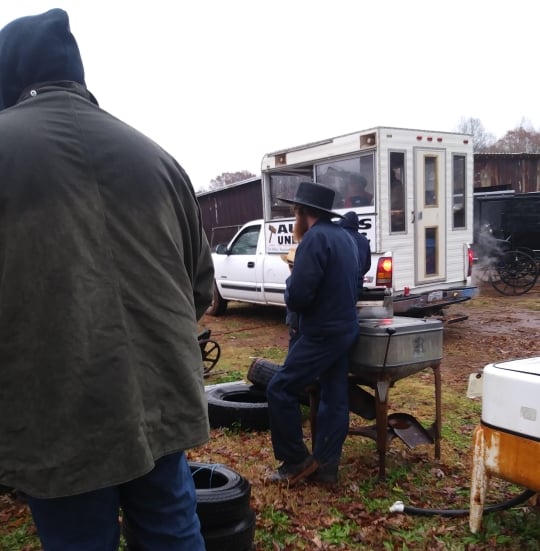
Swartzentruber Amish life and customs
Swartzentruber Amish lead a plainer and more restricted lifestyle than other Amish. Swartzentruber Amish may be less likely to make use of medical services. As Hurst and McConnell explain in An Amish Paradox, member of this group may rely more on traditional remedies. Due to generally lower income and larger families, they may rely on cheaper food products and have a less healthy diet compared to other Amish.
Swartzentruber people generally do not hire cars except in emergencies. When traveling to visit other communities, this means they would travel by train or bus, rather than hiring a passenger van like other Amish would.
Swartzentruber Amish also tend to be among the “slowest” of Amish in numerous ways, not just in use of technology. Swartzentruber church services include slower singing and are typically longer, lasting up to four hours.
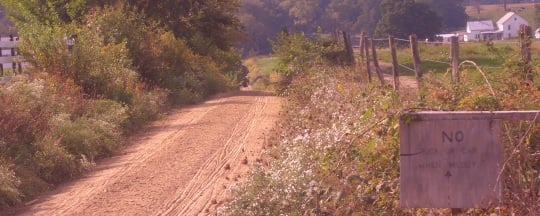
During the after-church meal, Swartzentruber Amish eat bean soup from a common bowl. Members of this group are less likely to find sports or other worldly amusements acceptable. Karen Johnson-Weiner also notes that Swartzentruber Amish are more restrictive about reading materials allowed in the home than are other Amish, and follow a more basic school curriculum as well. (New York Amish, Johnson-Weiner).
Despite, or perhaps because of their stricter lifestyle, Swartzentruber youth have a reputation for wildness. Swartzentruber youth have been involved in accidents. Higher-order Amish in particular who live among Swartzentruber Amish sometimes criticize their youth parties and wild behavior.
Relations with other Amish groups
Swartzentruber Amish are also seen as different by other higher order Amish groups, and vice-versa. In the Holmes County community, for example, David Luthy notes that Old Order Amish make fun of the long hair and beards of the plain faction, calling them gnudle Woola, referring to the kinks in sheep’s wool (New York Amish, Johnson-Weiner).
In An Amish Paradox, Hurst and McConnell make the surprising observation that “many Old Order Amish comment that the social distance between Old Order Amish and non-Amish is far less than that between Old Order and Swartzentruber Amish.” Other Amish may look down on Swartzentrubers for what they perceive as stubbornness in matters of technology or road safety, while some respect them for their tradition-anchored stances.
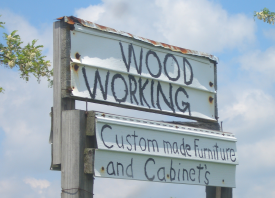
Swartzentruber Amish, on the other hand, may see Old Order Amish as somehow “less Amish”. Karen Johnson-Weiner notes the comments of one Swartzentruber woman who said that “I think we’re more in the Amish side [in comparison to the more progressive Amish groups]. They [those other Amish] are strange or different.” A second Swartzentruber woman classed her friends among Old Order Amish as sotleit, a word meaning “others”.
She commented that “they’re still Amish because they don’t drive cars. Those that drive cars are Mennonites” (New York Amish, Johnson-Weiner). One Swartzentruber person said that the more progressive Amish are “not a group that we’d want to live up to” (emulate) (An Amish Paradox, Hurst/McConnell).
At the same time, some Amish will work with Swartzentruber people in various ways. This may come in the form of providing them employment or in acting as a go-between on certain issues such as safety matters, in which Swartzentruber Amish may be more wary of dealing directly with non-Amish.
Divisions within the Swartzentruber Amish
Amish society has been rent by church divisions over time. The Swartzentruber Amish are not a unified group either. A few divisions have occurred since the original break from the Old Order Amish. One internal Swartzentruber division occurred in 1993 in an incident sparked by youth provoking a minister by playing loud music and which resulted in excommunication, national mediation, and eventual division. Later disagreements over parochial school and drip irrigation resulted in a further division around the turn of the 21st century. The result is that there are now three distinct non-fellowshipping Swartzentruber groups in Holmes County.

Are Swartzentruber Amish the “true” Amish?
The Swartzentruber Amish, along with a few other highly conservative groups such as the Nebraska Amish, probably most closely fit the stereotype of the Amish as “stuck in time”, though the label is misleading even for Swartzentrubers. The amount of change the Swartzentruber Amish have accepted in the form of new technology, however, is minimal.

While Swartzentruber Amish may be criticized by more progressive Amish groups, they themselves would most likely say that they are holding to the true Amish ways, while regarding the openness to technology and adoption of “faster” ways of other Amish as suspect. For what it’s worth, outsiders have also commented that the Swartzentruber Amish are the “true” Amish, likely reflecting the idea that this Amish group most closely fits people’s preconceptions of the Amish in general.
Regardless of how they interact with other factions of Amish, the Swartzentruber Amish are an example of the diversity in Amish society, occupying a firm position on the conservative end of the Amish world.
For further information, see:
An Amish Paradox: Diversity and Change in the World’s Largest Amish Community, Charles E. Hurst and David L. McConnell
New York Amish: Life in the Plain Communities of the Empire State, Karen Johnson-Weiner
Train Up a Child: Old Order Amish and Mennonite Schools, Karen Johnson-Weiner
“Plotting Social Change Across Four Affiliations”, Donald B. Kraybill, The Amish Struggle with Modernity, eds. Donald B. Kraybill, Marc Alan Olshan
Amish America blog: Interview with Karen-Johnson Weiner on Swartzentruber Amish
Updated July 2021


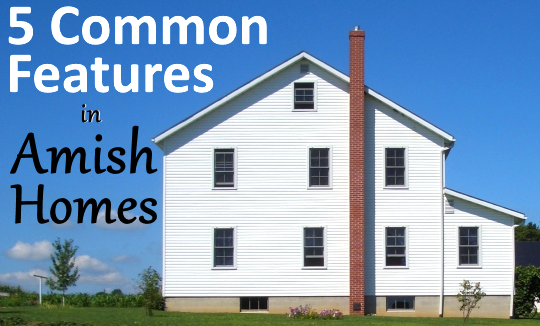
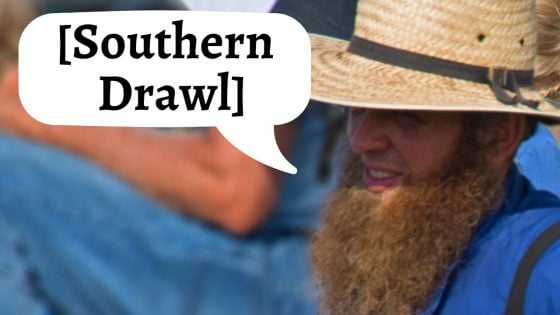
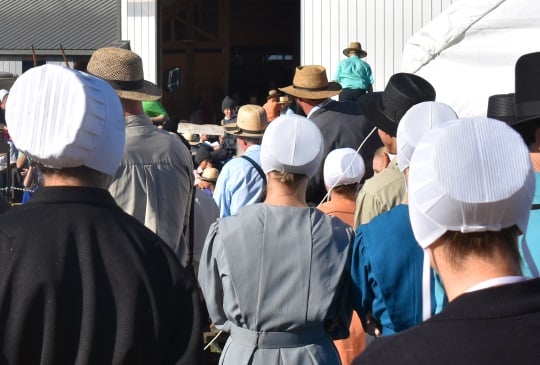

I have one question about the Swartzentruber Amish: do they have assurance of salvation? To put it bluntly, do they have Jesus in their hearts in order to go to heaven? Are they true Christians?
Swartzentruber Amish
Sounds like an evangelical christians questions. Faith alone, scripture only Blah, blah. We have been friends with one family for many years. God Love them. Are they saved? They don;t say yes or no, only that at their redemption they will know for sure. We have stayed with them (in our camper) beautiful down to earth. When we first met I told them that I didn’t know much about their church but would respect whatever. Friends yes, but not invited to their wedding; not a problem with us. Never ask if wife is going to have a baby, not a problem. P.S. Faith alone is not in the bible, Luther added alone. Scripture only? When did the bible get published and at that time could afford one? “If you sin with your hand, cut it off, pluck out eyes…for real? Luther, “James…faith and good works…pile of junk. Can you add or drop words from the bible?
John we cannot add or subtract from the Bible,but we can find a key of looking at the Word by inspiration of the Holy Spirit.Since we are saved by GRACE,we need to focus our faith in and through Grace.What is Grace? and What does it do for the believer?We know that God is willing that His Son be worshiped and adored and glorified.So when we realize that to worship the Father in Spirit and in Truth,we are hitting the most basic element of our faith.
Jesus is the Truth,so when He said that those who worship His Father should worship in S p i r i t and in Truth,He meant that His Father is Spirit,and that we must enter the spiritual realm to worship Him,and that the Truth is the Son,and that we must see the Son as our only source of the Truth of the Godhead. The Holy Spirit as Comforter brings it all together!
Born Again
Hello, of course we cannot know each Amish persons faith in the saving work of Jesus individually, but we have several friends that are Amish and Ex Amish that make me doubt that the communities as a whole understand being truly born again. When our ex Amish friends started reading the Bible more and seeing that there was more to salvation that outward works they really received the work of Christ for themselves! They knew they were born again new creatures in Christ! So they were then kicked out of the community. They didn’t know non Amish people nor change the way they lived but were kicked out solely because of reading the Bible and coming to the truth. Now they have left that life and are living for Jesus.
Our friends that are still Amish seem to know that their works are not what saves them but want to stay in their community. I am not yet sure how they relate to Jesus and if they are truly born again. But they do have an understanding of the truth. They interact a lot with outsiders and even invited us to church. As in all people groups there are some that really love God and seek him and others that only make an outward show hoping they are good enough. I really love these people, they are a sincere group!
As whole most Amish do not believe in the assurance of salvation. There are a few who do, but it’s kept fairly quiet and not discussed with anyone outside the family unless they know that the other person believes the same way. They believe you can’t know you are saved and that claiming you are is prideful.
Amish Faith
I live among Amish(Swartenberger & Old order) Either, one believes in being born again. They believe in faith by works. They also only attend churches that believe in shunning(which they both do. They also believe(like many do) that they are the only true church…
Amish in Missouri
In recent years we’ve had a lot of Swartzentruber Amish move into our area in Mo.
https://amish-heritage.org
Hi Alyssa, I’ve tried to answer your question, or at least the first part, here: https://amishamerica.com/are-swartzentruber-amish-saved/
How could you tell?
Alyssa, how on earth could anyone tell that about another person, let alone a whole group of them that you’ve never even met? I’m sure that they mostly think they do. I’m not sure you could really tell about yourself whether you are a true Christian, even though I’m sure you believe you are. You’ll only find out for certain after you die, and see what happens. So what makes it likely that anybody could say about a whole category of people? The most likely answer is that, as with any other group who claim and attempt to be Christian, some manage it and some don’t, and the rest of us will never know in this lifetime.
Hmmm
Naomi, you need to read the Bible, girl! God says that you may KNOw that you HAVE eternal life! 1 John 5:13…. And so much more! …keep seeking you WILL find! (Matt 7) I am saved, healed, delivered and set free and surely KNOW it! (John chap 6) I am Gods child and KNOW it! I’ve layed hands on the sick and have seen them recover. (Mark 16)
If you are a believer you know it! If you question it… you are not. See Andrew Womack athe true gospel to learn how to know for sure!
a hair's breadth
My father’s side of the family were Amish from the Holmes/Wayne
County area. The family left the Old Order when my dad was one
(baby boom era).
I didn’t grow up with him but have been in touch more over the
past few years and have been probing him for some of the Amish
family history. He is in no way Amish these days, if ever, but speaks
Pennsylvania Dutch and rebelled as a teenager by wearing a tie to
church.
I remember him saying that his dad always said they were a hair’s
breadth away from being “Old Order”. I always took that to mean
driving buggies and not having electricity but he mean’t still driving
buggies but they were almost, gasp, Swartzentruber.
He called them cavemen.
Apparently, my Great Great Grandfather, Dan Wengerd (he was a gunsmith and they
called him BiksaDan, biksa meaning guns from what I understand?) was a bishop in the church
at the time Sam Yoder split off. They say another reason was hat brim size. My grandfather wrote
a poem on the barn wall about hat size and the split.
BiksaDan explained.
Greetings, Eli:
I’ve searched around for ‘biksa’, and this is what I found:
According to Edward H Reich, in his “Pennsylvania-Dutch handbook (1879)”, Bix is PA-Dutch for Rifle.
Also, in the “Common sense Pennsylvania German dictionary (1895)” Bichsa-Mocher means Gunsmith.
Credits go to Lance[So you want to join the Amish], who submitted the following link:
http://www.archive.org/search.php?query=subject%3A%22Pennsylvania+German+dialect%22.
Almost Swartzentruber
Hi Eli, thanks for sharing a bit on your background. I do not speak Dutch so cannot confirm “biksa” but maybe someone can. I think your grandfather’s poem would be an interesting one.
On the plainer Amish being called ‘cavemen’ you probably know there is a bit of looking down on more conservative Amish by higher groups, particularly in Holmes County where so many groups rub shoulders.
Muslim friend wants to see the Amish
Hello Eric,
My son is attending Syracuse University working on a PhD in Religion. He and our family are of the Mennonite faith.
My son has a Muslim friend from school who would like to meet or just observe the Amish way of life even if it is just driving through an Amish community. He returns to Tunisia in August, so only has a few weeks.
He is living in Syracuse, New York, so would need a community in western or upstate New York.
Any help you could provide would be great.
Thank you.
Lily
Hi Lily, the largest settlement in Western NY is Conewango Valley. That’s in Cattaraugus County. 2000+ Amish in the area. A quite plain and conservative Amish community. So that might be a nice place to visit. There is more on Amish in the state here, I hope it helps: https://amishamerica.com/new-york-amish/
Origin of the Swartzentruber name
In doing some research, I found that the name Swartzentruber apparently comes from a town in Switzerland named Trub. A person from that town is a Truber. The Swartzen part comes from a well-known BlackBerry that is grown in the Trub area. Swartz basically meaning black. If someone out there has another history OR agrees with my findings, please reply. Thanks Erik for all of your years of hard work putting out great information about the Amish to the world. I have 11 years and 400,000 miles completed, doing Amish taxi work.
I’ve got people on the case for the poem. I hear my uncle wrote it down but I haven’t heard anything yet.
When I was young and full of pep
I often made a crooked step
But now I’m old and my head looks flat
Because I where a four inch hat
But now if I am onest and true
That four inch hat will surly do
But should I tell a lie at that
What good would do my four inch hat
– Andrew Wengerd
That was written on the barn wall by my great grand father. His father was a bishop when Sam Yoder split off.
Apparently, the Sam Yoder side of the church wanted 4″ hats while the other side wanted 3.75″
A year later they changed from 4″ to 3.75″ as well.
Question: Do the Swartzentruber Amish homes permit the "Old Testament"?
Do the Swartzentruber Amish homes permit the “Old Testament”?
If so, are they permitted to read it?
I ask because growing up my neighbor friends were Catholic, & in their upbringing permitted yes, to have the entire Bible in their homes, but told & instructed not to read it as they were unworthy to do so, only their priests were the only ones permitted to read & translate…
Raised a Baptist was taught the Holy Spirit guides you into all understanding & were encouraged to read so not be misinformed & fall for just any man’s interpretation, to read it, learn it & live it, not by just what one was told, but by what the Bible actually says! But even so, I have Repeatedly found more truth when looking up original Hebrew (O.T.) & Greek (N.T.) for fuller meaning and understanding to what GOD & JESUS intended! But for anyone of any faith be ever denied this freedom to seek, search & find is well just wrong! Everyone needs to read both Old & New Testaments in full & repeatedly, it IS our Daily Bread!
How many Americans can interpert the U.S. const? Why do we need lawyers? Why do we need preachers? Why 38,000 protestant denominations? How many people can really understand the bible? Any advanced society has a governing body to explain the RULES. I don;t see “once saved always saved” in the bible. Luther, if you sin sin mightly, if you kill, kill a thousand, have faith and you are saved? According to Baptist, after you are saved you can’t be cast into the pit. Only a few words on “gift of tongues.” Jesus never said it or experienced it. Why no communion everyday, bread and WINE, not grape juice. Jesus said, “do this in memory of me”.
Is rhe DNA of Jesus floating around in the world? No brothers, or sisters. His mother, lived with John, w3hy not her children if she had any? Catholics read parts of the bible every day in churches. I have never heard a priest come down on others like the John Hagee (who had sex outside of marriage. Oncle saved always saved?
Hello John. No offense intended, but reading your two posts above, they come across as fragmented. I don’t think I can completely understand your message. No, I get the idea about people taking a portion of Scripture and molding it into a preferred form, but my main question is in regard to your comment about Martin Luther (presumably) adding “alone.” Are you referring to James 2:24? I think that is the only place the phrase is found in the English Bible, and in this case it is rejecting the notion. I am familiar with Luther pointing to faith-based salvation as opposed to works-based salvation (Protestantism). Is that what you are talking about, or did you mean that Luther added words to the Scriptures?
John, the fact that Jesus gave Mary to his beloved disciple John,does not in any way negate the fact that Mary in fact had other children.Joseph was gone,and Mary was no doubt living with the youngest of her children.John was chosen by Christ to be a provider and a help to Mary and whatever children were with her.The other older ones might have had families of their own and did not in fact believe that Jesus was the Messiah.
Nevertheless, the Bible does not bring out all the specifics.
Jesus is the Lord and giver of Life,He is one with the Father and the Comforter(Holy Spirit),so His life with Mary and Joseph is over,He sits at the right Hand of His Father,and intercedes for the whole body.Christians may be well organized in many factions,but the truth is that Jesus is still preached amongst them,and His Word is still the Main focus of their lives.Hardly a problem for the Comforter to sort through the man-made organizations.How wonderful that we can be all ONE in Christ,in spite of some differences?
Re: Use of Old Testament
Sorry to digress off the Amish subject but wanted to let you know that in the Roman Catholic Church Bible Study of any book of the Bible is encouraged and has been for several years.
Erik, thank you for all you do to bring all things Amish to us English who love them even in ignorance (speaking of myself only).
I would caution to use the old testament (and entire Bible) with with the understanding that through the centuries, scripture has manipulated for various purposes from before the Roman times. Learning the complete history of our Western heritage gives one a better understanding of who we as a people, Anabaptist and Catholic, and how the Bible played an enormous part in our history for good and bad reasons.
Contact Religious
Hi!Looking for contacts with te Amish community Swartentruber general Amish,Mennonites/us/canada Please response among the followers of these churches Thank you!
Legalism vs Grace
Every religion and culture has its peoples that choose stringent or strict way of life,to prove they are living the grass–roots of their persuasion.We see this in every religious group:Hindus,Buddhists,Jews,Muslims,and Christians.
Since the gospels is the main teaching of the Christians in general,we see the very ascetic view of living for Christ.
But the truth is that when a person becomes Christian they are introduced to a life of grace,because no one is able to live asceticism,especially when they are involved with more than one person.A hermit may succeed,being isolated from the world,living far away from those who are surrounded by technology and civilization.
The Swartzentruber,maybe a plain and simple way of life,and they should be admired to the bravery in living that way in the midst of an affluent society,but it is not practical to live with such restriction,when in fact we are called to Grace,and to be IN Christ,who is our peace.Christ deals with inner man,but these groups that isolate deal with the outer.Perhaps many of that Swartzentruber will find their rest in Christ,but they are not listening to Christ when He calls us to make disciples of A L L Nations.
Daniel, I think 261 000 Amish plus a futher 200 000 Hutterite, OO & OC Mennonites, plus perhaps another 120 000 Conservative Mennonites, Charityites and Brethren show that it is possible to live separate and distinct from the world as per biblical requirements.
If I met you in person, will your dress and lifestyle reflect the Grace of Christ or the grace of the world?
Your tongue can make many claims about Grace, some true and some false, but it is your lifestyle and dress that will speak truest. This the Amish understand and thus live accordingly.
If it looks like the world, acts like the world, talks like the world – then it is of the world and not of Christ or in Christ. The outerman reflects the innerman and if the outer is worldly, then so is the inner, without doubt.
And to answer your last comment about Amish witnessing to the world, I think the Amish are more well known around the world, thanks to Hollywood, than any other Christian denomination.
More tourist visit various Amish communities annually than the Vatican or the Taj Mahal.
For their size, the Amish witness to more people a Christian lifestyle than any other Christian group, sect or cult.
They are growing in new membership faster than any other denomination and establish a new church district approximately every three days. Many Christian denomination are closing down and not growing. What are the Amish doing right? Well for one thing, they don’t accept that the inner and outer can be different, as in a Christian on the inside and worldly on the outside. Not possible.
While many secular people would rightly call assimilated worldly Christians hypocrites, few would call the Amish that.
They have witnessed to you. Proof of that is you on this site. Why have you not converted to the True Faith and joined them?
The lack of outsider converts is not due to a lack of witness on their part, as you assert, but rather to a stubborness in the heart of the outsiders. Look to yourself to understand why, for you have yet to accept the example of their way of life as The Way, as the narrow path, separated from the world, that leads to salvation.
Good article!
All I can say is this:
A person can call himself Swartzenruber Amish, Old Order, New Order, Mennonite, a Greek, or a Jew, but if he does not love God in his heart and love his neighbor by obeying the Law of God from the heart, he is not a Christian.
Wonderful article! I like not only this article, but this whole site. Very helpful. I’m wanting to go visit Ethridge if at all possible in the next couple of weeks.
Glad you enjoyed it Luke, and enjoy your visit to Ethridge. Pick up the local map if you go w/Amish businesses listed:
https://amishamerica.com/ethridge-tennessee-amish-map/
thank you
Just a note of thanks in general. I am a Catholic woman and have been intrigued by the Amish lifestyle for a long time. After recently reading a fiction series of books on Amish life, I understand why, as a Christian, we are to live our life of faith in a more meaningful way on a daily basis. I heard that we should do this while growing up, but did not really listen all that clearly. As a non-Amish, I am swayed by the media, current events, others claiming to be Christian, along with a myriad of
other things. The Amish clearly live life as a believer.
This is important irregardless of what denomination you are. Again, thank you for the example of what life needs to be focused on-living as a believer in Christ.
Comment On This Discussion Trail
Hello: your discussion above is very interesting. It brings to mind the various other religions that are not Christian oriented:Buddhism, Islam, Shinto, etc. How do the Swatzentrber elders stand on these other faiths? Isn’t the bottom line this: religious faiths and practices and lifestyles are different for everyone and are highly individual. What worship practices and/or way of life works for one person/family/group/population may not work for another in terms of believes, practices, etc. One can call their redeemer Jesus, Buddha, Allah or whomever, and the holy book may be the Bible, the Koran, the New Testament, the Talmud;what does it matter what these items are named? The bottom line is: live a good life, be honest in all of your activites, and kind in all of your dealings. I am sure the non-Christian religions have a comparable set of principles to live as the Christians have to the Ten Commandments. Attempting to live in accordance with one’s own individual interpretation of the principles of the Ten Commandments (and whatever they are called in other faiths)is the bottom line.Nothing is gained over arguing about issues as small as 1/4″ for hat brim, or issues of safety to the level of an orange triangle. Are these items hiding the realy issues, possibly resistance to government or outside groups telling/legislating people how to live on such personal scale as to require as small an item as orange safety triangles for example. If that is the issues I say ‘keep fighting’ for our country is now has become socialist beyond recognition.However, nothing positive results from name calling, nor divisions. Nothing is gained in narrow mindedness and slavish adherence to ritual, lifestyle, doctrine or minutaie. Respect for others and recognizing similarities as opposed to differences foster a positive environment we all deserve and hopefully strive to achieve.Remember, many people are in the U.S. because they could not live as they wished in their lands of origin.Let us remember this. Thank you for taking the time to read my post.
Hi Susan
What you write is very vald about other religions having vaules, morals, ethics, etc. and I’m sure any rational and resonable person would agree with you, including the Amish.
However the Bible does not agree with you. The Bible claims that Jesus is the only way to salvation and all the other ways are false and lead to damnation.
So now we have a dilemma, do we follow our own rational and logical thinking, or do we follow what the Bible says?
The Amish have chosen to follow the Bible, as have other plain groups, which is why they dress they way they do, as it is written in the Bible, i.e. head coverings, modest dress, no pants on women, no jewellery, no make-up, etc.
Sure the Amish have added, or rather not added some modern stuff, but basically all biblically based Christian groups accept the biblical teachings regarding salvation, which means in a nutshell, if you do not accept Jesus Christ as your Lord and Savior, you are going to hell, no buts.
Plain groups futher believe that if you call yourself a Christian and are not obedient to the word of God, that is, to live a separate lifestyle from the world, you will be joning the non-believers in hell, again no buts.
You may not like this hardcore attitude, but they do and for the last 500 years have willingly died rather than give up such beliefs.
The Amish do not like grey areas, for this leads to confusion and chaos and that is where satan will be found. So in a black and white world, where confusion and chaos have been conquered, the width of one’s hat brim, the length of one’s dress, the size of one’s safty triangle, etc. are not mundane matters, but are in fact the physical aspect of a spiritual war against chaos and evil.
One last thing, good people do not go to heaven, for none are good, only the saved go to heaven, which is why joining the church and coming under the discipline of the elders is so important in plain churches. It is the narrow path that leads to salvation which few will find.
Are you Amish?
Hi Darryl. Are you Amish? If not, why not?
“Biks” is singular for “gun” and “Bik’ suh” is plural.
I grew up referring to the Swartzentruber as “gnuddle-röllah” and thinking of them as being like cavemen. I had no idea what “gnuddle-röllah” meant.
There are a lot of things being said here, but one thing is clear: One has to believe that Jesus is the Son of God and obey God’s commands in order to be saved. There are a lot of false teachers and false doctorines. It is not what “we think” but what God says in the Holy Bible.
Cleanest Schwarzentruber Farm Ever
I’d like to know where you got that picture of the Ohio Schwarzentruber farm without junk stacked all over the place. That is the cleanest one I ever saw. The deacon should visit those people.
I like the Schwarzentrubers. They will visit on the bus, and are not stuck up. It’s wierd, the highest and the lowest seem to be the friendliest. I wouldn’t want their young folks trouble, but to each his own.
By other plain churches, Swartzentruber are called “Crusty”. Just saying 😉
Deitsch
Well, Biksa Dan. Mark says that a “bix” is a rifle. A shotgun is a “schroat bix.” A pistol is a “flint bix.” Plural is “bixa.”
Who are the Swartzentruber Amish?
Schwartzentruber is my maiden name. I am from the Kitchener area my relatives and my family are Amish Mennonites from the descendants of Menno Simons the founder of our faith. Hence we are called Mennonites. I would suggest checking history on him. The name Schwartzentruber doesn’t only come from Ohio it is further back than that, again check history. This family name is tied to Roman Catholic’s too. So this article you are printing is only a very, very small part about the name. The parts about shunning and very simple ways are not the way my family treats each other and I don’t feel that is the way God wants us to treat each other John 3:16. Check it out in the Bible!
Check again
Check article again, article is not about the name ‘Swartzentruber’ or Menno Simons or what he has to do with Mennonites, but about the people known today as Swartzentruber Amish.
Thanks
Thank you for your article Erik!
I would certainly be interested to read more articles about the Swartzentruber Amish, particularly about their theology.
I guess it is quite hard to understand their theology as I’m assuming they don’t have too many publications on such matters?
I read through some of the comments, and one commentator said that they speak of their coming redemption. I was interested to know what this means.
rugs
where can we purchase these rugs?
Do you mean the rugs described in this post? https://amishamerica.com/swartzentruber-amish-rug-seller/
There is a description of where the farm is located towards the end. The only way I know of to get them is to visit the place. Unfortunately, we’ve learned that the woman, Fannie, who runs this little business will be moving away from the Holmes County area (or perhaps already has).
Accents
Do Swartzentruber Amish generally have thicker accents when speaking english compared to other Amish?
Swartzentruber Amish accents when speaking English
Generally that is the case. You can observe this pretty easily in a community like Holmes County OH where there are a number of more progressive Amish affiliations living alongside the large Swartzentruber population. The type and quality of Amish schooling varies by group and this is probably one reason for that. Another would be relatively less contact with non-Amish people.
Thank you for seeing the wisdom of not vaccinating
Thank you for seeing the wisdom of not vaccinating
Hand Tools
I have hand tools i.e. saws, brace & it, planes etc. that I would like to donate to an Amish Church / Community. If interested in these, please reply back to my email. I live close to the Tennessee/Kentucky line near Scottsville, Kentucky and would bring the tools to your church/community if you have an interest in these tools if there is a convenient location in the area of southern Kentucky.
I look forward to hearing from you.
Thank You
Pat Raymer